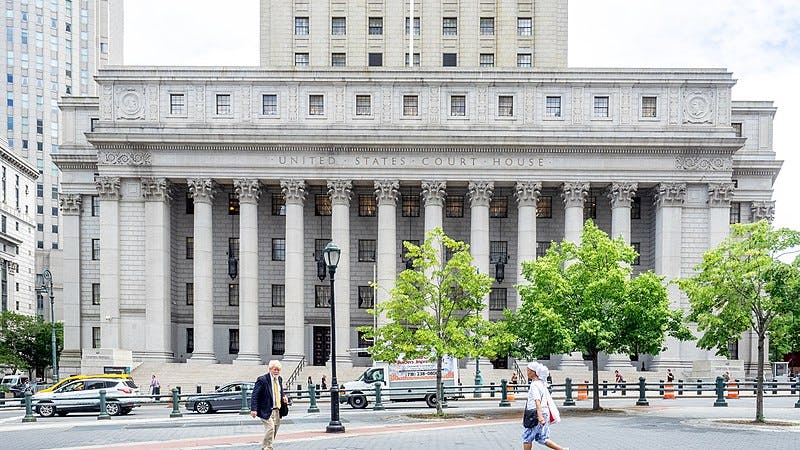Will the Second Amendment Die in the Second Circuit?
Two cases, on New York’s law abridging gun rights, will go before panels of the 2nd Circuit as early as January.

Is the Second United States Circuit going to be where the Second Amendment goes to die? We ask because two cases are going to come before the circuit riders early next year asking whether New Yorkers have what the Constitution — in some of its plainest language — calls the right not only to keep but also to bear arms. Two cases, on the Empire State’s law abridging these rights, will go before panels of the 2nd Circuit as early as January.
This is shaping up as a test of whether the appellate courts will tolerate defiance of the Supreme Court by New York Democrats. The cases arose in response to legislation signed by Governor Hochul July 1. That was after the landmark vindication of the Second Amendment in New York State Rifle & Pistol Association v. Bruen. That ruling struck down New York’s restrictive gun permit policies, only to have Democrats issue a new raft of restrictions.
As we had anticipated, New York Democrats tried to exploit a possible ambiguity in the Bruen ruling over “sensitive places” where gun-carrying rights can be constitutionally limited. Justice Thomas’ ruling observed that schools, polling places, and courthouses were historically places where “weapons were altogether prohibited,” and so “modern regulations” limiting guns in such “sensitive places are constitutionally permissible.”
That said, Justice Thomas warned against going too far. New York couldn’t, for example, make “the island of Manhattan” a “sensitive place.” The Democrats ignored this warning. The list of sensitive places they created covers vast swaths of the state, the AP says, including “places where people have gathered for public protests,” as well as places of worship, libraries, parks, the transit system — and a mockingly expanded definition of Times Square.
The Democrats also imposed a new set of requirements on New Yorkers who seek a permit to bear a firearm. The old law, struck down by Bruen, forced residents to prove “proper cause” to get permission to carry a gun. Now, residents are required to show they have “good moral character,” undergo extensive training, and turn over to state investigators their social media account details. Are such steps required to exercise any other civil liberty?
Efforts of the Democrats to defy Bruen are on a par with the “massive resistance” across the South to the Supreme Court’s Brown v. Board of Education ruling ordering the integration of public schools. New York’s Second Amendment advocates took to the courts. Two federal district judges — Glenn Suddaby at Syracuse and John Sinatra at Buffalo — have struck down parts of the Democrats’ new gun law as unconstitutional.
Following Justice Thomas’ reasoning in Bruen, Judges Suddaby and Sinatra sought to find historical precedent for the restrictions in the Democrats’ law. The regulations were found wanting. There was no example in the historical record, Judge Suddaby observed, for turning an entire neighborhood, like Times Square, into a “gun-free zone.” Even the New York Times saw that the enlarged boundary “defies both common sense and lived experience.”
Judge Sinatra took aim at the new law’s ban on guns in houses of worship. New York offered 19th-century examples. Judge Sinatra called them “outliers,” finding the ban “inconsistent with the Nation’s historical traditions,” and “infringing on the right to keep and bear arms in public for self-defense.” He also balked at the state’s effort to exclude guns from, say, stores, unless they put up a sign saying guns are permitted.
Judge Suddaby groused that the hastily written law was “a wish list of exercise-inhibiting restrictions glued together by a severability clause.” We imagined, when New York appealed to the riders of the Second Circuit, the lower court rulings honoring the Bruen ruling would be speedily vindicated. Yet both rulings have been put on hold by the riders pending full arguments in the cases. It doesn’t bode well for the Second Amendment in New York.

